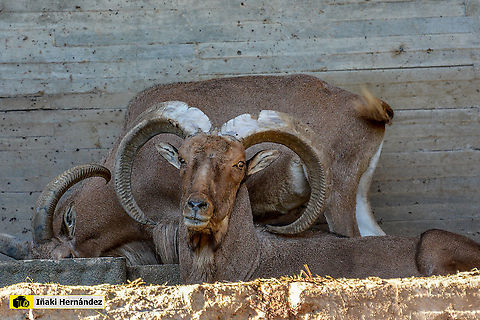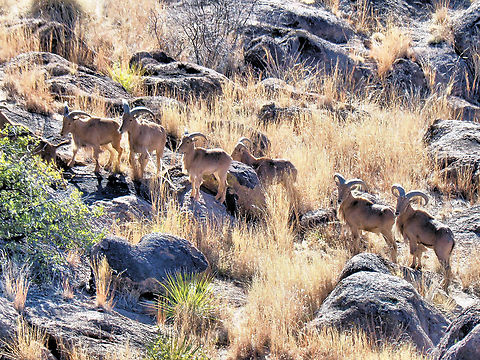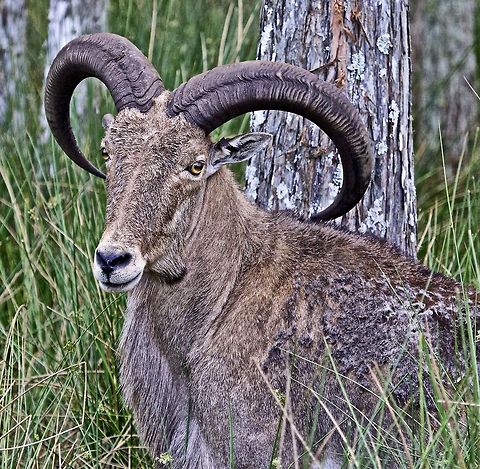
Appearance
Barbary sheep stand 75 to 110 cm tall at the shoulder, with a length around 1.5 m, and weigh 30 to 145 kg. They are sandy-brown, darkening with age, with a slightly lighter underbelly and a darker line along the back. Upper parts and the outer parts of the legs are a uniform reddish- or grayish-brown. Some shaggy hair is on the throat with a sparse mane. Their horns have a triangular cross-section. The horns curve outward, backward, then inward, and can exceed 76 cm in length. The horns are fairly smooth, with slight wrinkles evident at the base as the animal matures.
Naming
The binomial name "Ammotragus lervia" derives from the Greek ἄμμος "ámmos" and τράγος "trágos"."Lervia" derives from the wild sheep of northern Africa described as "lerwee" by Rev. T. Shaw in his "Travels and Observations" about parts of Barbary and Levant.
The Spanish named this sheep the "arruis", from Berber "arrwis", and the Spanish Legion even used it as a mascot for a time.
"Aoudad" is the name for this sheep used by the Berbers, a North African people, and it is also called "arui" and "waddan".

Distribution
Barbary sheep have been introduced to southeastern Spain, the southwestern United States, Niihau Island, Mexico, and some parts of Africa.Habitat
Barbary sheep are found in arid mountainous areas where they graze and browse grasses, bushes, and lichens. They are able to obtain all their metabolic water from food, but if liquid water is available, they drink and wallow in it. Barbary sheep are crepuscular - active in the early morning and late afternoon and rest in the heat of the day. They are very agile and can achieve a standing jump over 2 metres. They are well adapted to their habitat, which consist of steep, rocky mountains and canyons. They often flee at the first sign of danger, typically running uphill. They are extremely nomadic and travel constantly via mountain ranges. Their main predators in North Africa were the Barbary leopard, Barbary lion, and caracal, but now humans, feral dogs, competition due to overgrazing by domestic animals and drought threaten their populations.References:
Some text fragments are auto parsed from Wikipedia.